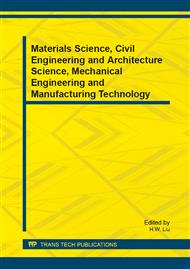p.1219
p.1224
p.1227
p.1231
p.1235
p.1239
p.1243
p.1248
p.1252
Improved Best Fit Algorithm for Billet Stacking Problem
Abstract:
Aiming at billet stacking problem of the rolling mill, an IBF algorithm is used to assign the billet to the warehouse positions. The utilization of non-empty warehouse positions and shuffles are considered in the algorithm. Computational experiments demonstrate that the proposed algorithm is feasible and effective, competitive and able to find more high-quality solutions for problem instances than artificial method.
Info:
Periodical:
Pages:
1235-1238
Citation:
Online since:
January 2014
Authors:
Price:
Сopyright:
© 2014 Trans Tech Publications Ltd. All Rights Reserved
Share:
Citation:


